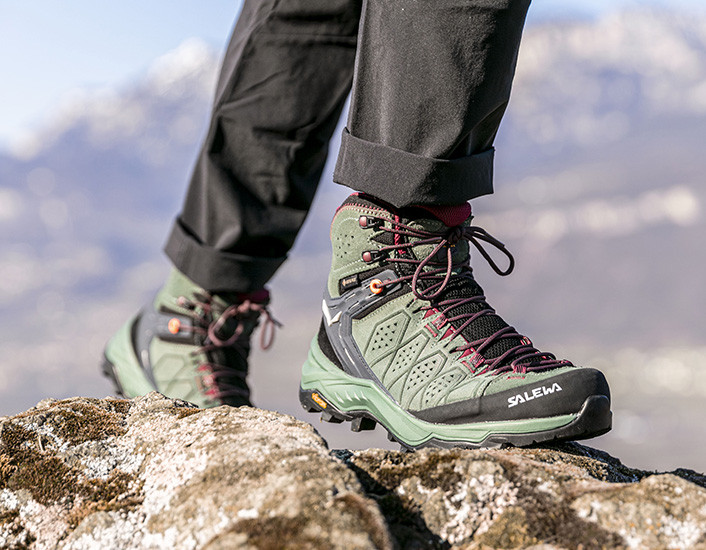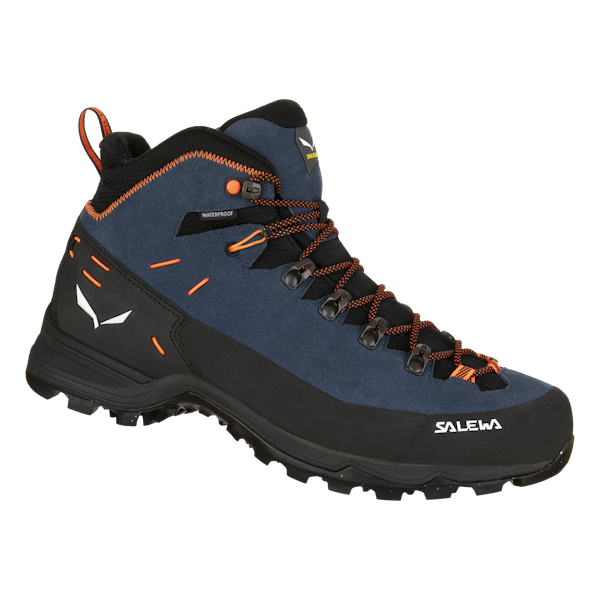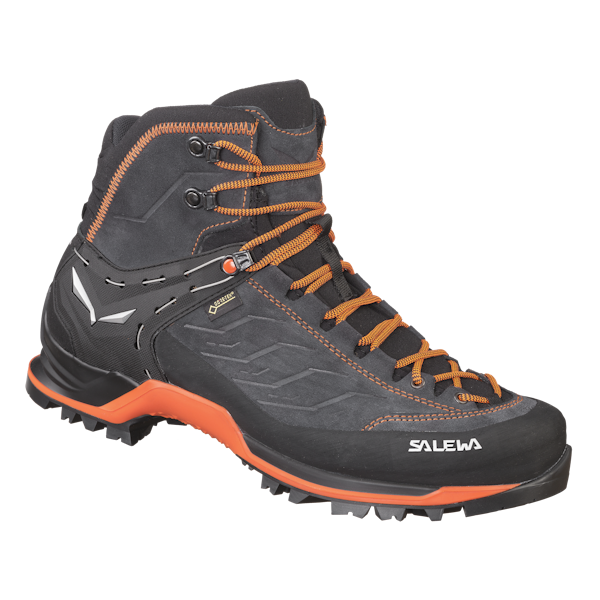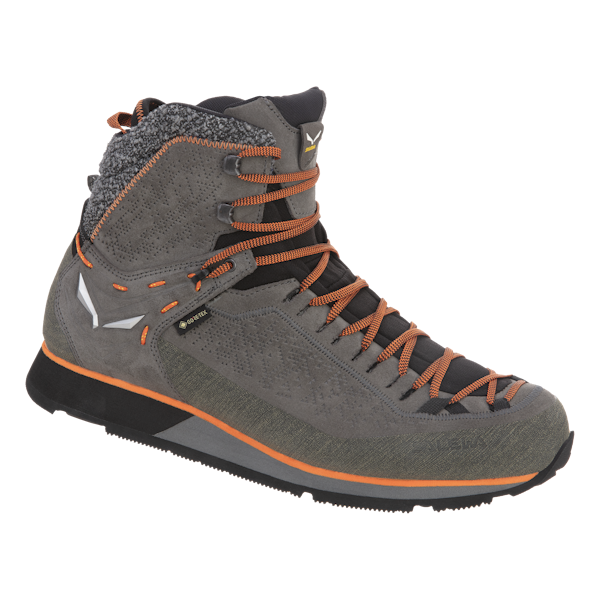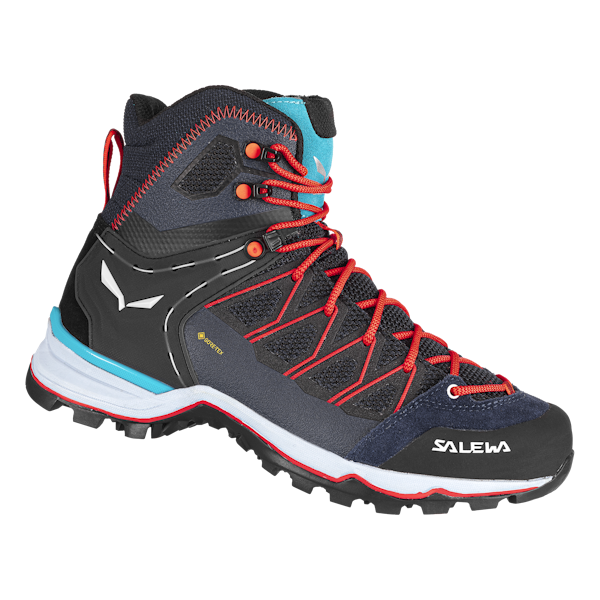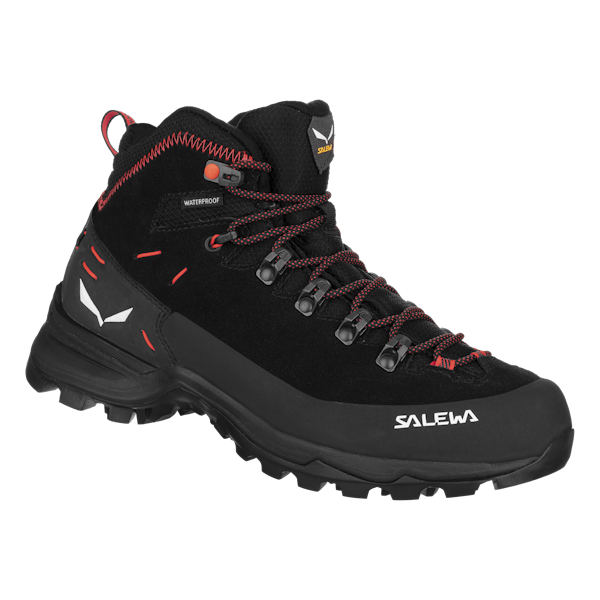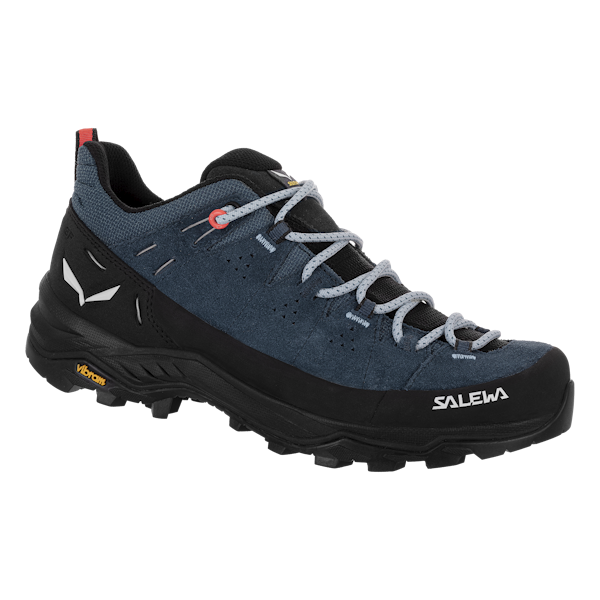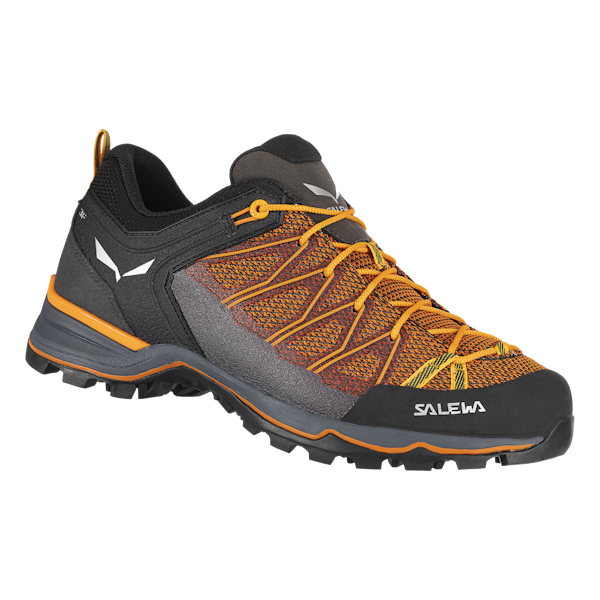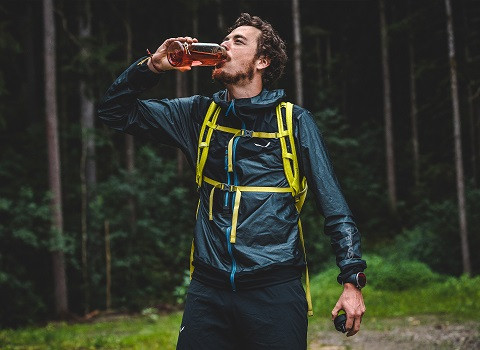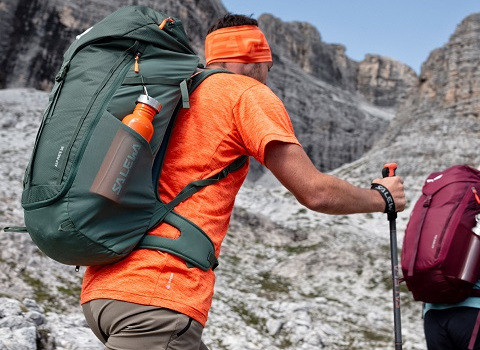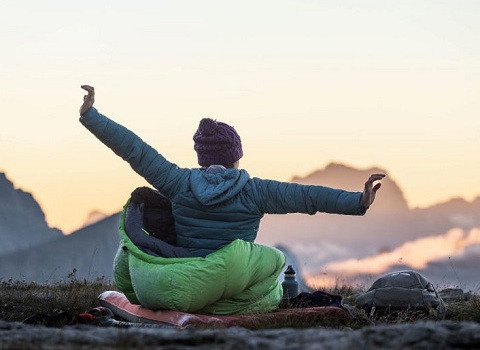expert advice / alpine trekking
HOW TO CHOOSE THE RIGHT TREKKING SHOES?
1. How to choose the right trekking shoes?
Your hiking footwear is probably the most important equipment you’ll ever buy. Making the right choice depends on what you want it for. Lightweight, low-cut shoes are ideal for many activities, such as approaches, speed hiking and easy day hikes. However, when carrying a heavier pack in rough and uneven terrain, it makes sense to wear something that offers more support, such as a mid-cut or high-cut boot. Performance on technical ground is also something to consider, especially if you are planning on climbing via ferratas. In the mountains, you want boots or shoes that are going to be comfortable for long distances and that protect your feet. They need to be durable, waterproof and lightweight too. Generally speaking, we recommend you choose the lightest and most comfortable footwear you can with the required support and stability for the style of hiking or trekking and terrain you have in mind. Most importantly of all, whichever option you go for, your footwear needs to fit perfectly.
2. Why wear hiking boots?
Consider your own level of fitness and hiking experience. Think about how strong your ankles and feet are. How important is ankle stability and foot support to you? Worried about twisting an ankle, or a previous injury? Then look for a more stable and supportive boot. Trekking boots provide better foot and ankle protection on rough, rocky trails. They tend to mid-cut or high-cut and often have a stiffer insole (not to be confused with the footbed). The higher uppers also help keep your feet dry in mud, rain or slush and they mostly have thicker, more protective soles that prevent you feeling rocks underfoot.
3. Do you want more support or more flexibility?
Modern leather alpine hiking boots are a far cry from the big, heavy old boots worn by previous generations of mountaineers. They offer similar levels of protection and stability, but with a more precise and comfortable fit and more flexibility – and all at a much lower weight. Many of our higher cut trekking boots feature a Flex Collar that increases the ankle’s rear range of motion and comfort and offers additional support during descents.
1. How to choose the right trekking shoes?
3. Do you want more support or more flexibility?
4. What are the different components of a trekking shoe?
5. Do I need a waterproof membrane for my hiking and trekking footwear?
6. Getting the right fit with your alpine trekking footwear
6.1 How and when to try on trekking footwear
6.2 Fine-tune the fit of your hiking boots
6.4 How to lace trekking shoes
4. What are the different components of a trekking shoe?
To understand the differences between alpine trekking and hiking models, it’s important to know a little about the components used to make them.
- Upper: This is the part of a shoe that covers the sides and top surface of the foot, including the toes and the heel. We make our uppers from high quality nubuck and suede leather and highly wear-resistant, lightweight synthetic fabrics.
- Reinforcement: Additional material added to the upper to help it withstand stress during use and to maintain the fit. All Salewa Alpine Trekking footwear is engineered with the trademark 3F system that connects the instep area with the sole and heel for better flexibility and support. We also use an EXA Shell grid to wrap the upper foot and protect against abrasion.
- Rand: The rand is a strip of rubber or PU-coated leather that protects the lower part of the upper from rocks and scree.
- Last: All high-quality footwear is built around a "last" – a model of the foot. The shoe is then “lasted”, i.e. formed and constructed around it. This is what gives a boot or shoe its distinctive fit and characteristics. Lasts are designed for specific activities for men and women. Naturally, there are also women-specific lasts to make women’s trekking models.
- Insole: The insole (not to be confused with the footbed) is a hidden layer inside the shoe above the midsole and the sole unit. It’s cornerstone of the shoe’s construction and is the same size and shape as the bottom of the last over which an upper is formed during the construction process.
- Midsole: The midsole is the component of the sole unit between the outsole and the upper. It provides the cushioning and absorbs shock. Together with the insole, it also determines the stiffness. Stiff shoes might sound like bad news, but they provide greater comfort and stability during long treks in rocky, uneven terrain and better precision when climbing.
Midsoles are made from nylon or EVA (ethylene vinyl acetate). Nylon is generally firmer and more durable so it’s ideal for extended mountain use. EVA is slightly lighter and offers greater cushioning. Some alpine trekking models feature dedicated midsoles made with an ergonomic shape, long-lasting cushioning and superior shock absorption for steep terrain. - Outsole: This is the outer part of the sole unit that comes into contact with the ground. It’s cemented to the bottom of the shoe. The design on the sole (the tread pattern) plays a crucial role. The outsoles on our Alpine Trekking footwear are made by leading sole technology experts Vibram® and Pomoca. We only use high-quality rubber compounds. Their tread designs have grooves, lugs and cleats studied to provide good grip on rock and scree and optimal traction on mud and grass. Note: by grip, we mean “friction”, i.e. the ability to cling onto a surface, while by “traction” we are talking about the ability to claw into softer terrain to prevent slipping or sliding around when you are off-trail.
- Tread design: The arrangement of the lugs influences how well the shoe performs. Shallow, wide shaped lugs tend to work better in smooth terrain, like limestone or granite slabs, thanks to the increased surface area between sole and rock. Deeper lugs, especially on soles with jagged outer lugs, bite more and give better traction in loose conditions, such as scree and softer terrain or even snow.
We also include a heel brake – the clearly defined ridge at the back of the upper before the forefoot that reduces the chance of slipping on steep descents. Some of our Alpine Trekking outsoles also feature a Ferrata Zone with specific right-angled lugs in the midfoot area for maximum force and stability through the foot on via ferrata rungs and ladders. - Climbing Lacing: All our Alpine Trekking footwear features climbing lacing for greater accuracy when adjusting the toe area of your shoe and more precision in technical terrain.
5. Do I need a waterproof membrane for my hiking and trekking footwear?
What kind of weather do you plan to use your shoes in? Many hiking and trekking boots and shoes come in a GORE-TEX® version. The waterproof and breathable membrane positioned between the upper fabric and the inner lining offers reliable protection to keep your feet dry and comfortable for the life of your footwear. GORE-TEX® membranes are also fast-drying, which makes them the ideal choice for multi-day alpine treks, as well as wet climates and winter mountaineering – especially where there’s no opportunity to dry boots out overnight. Waterproof breathable membranes also increase a product’s warmth in cold conditions.
Our comfortable leather linings come with the advantage that they adapt better to the shape of your foot. And the pleasant wear climate and comfort provided by full-grain leather takes some beating. However, non-membrane leather footwear is not fully waterproof, even with the best care and maintenance. Leather is a good option for drier conditions or when you know your footwear will have a chance to dry out overnight. In addition, the added breathability of a model without a membrane will be more comfortable and cooler in warmer weather.
6. Getting the right fit with your alpine trekking footwear
Trekking and hiking footwear should fit snugly, but without rubbing. You want a degree of sure-footed ground contact, plus flexibility and comfort for the descents.
- Check the heel to make sure that the back of your foot sits securely. To see if the heel fits properly, try the shoe on with the laces undone first. If it feels loose at the sides, the heel is too wide. Generally speaking, you should also just be able to insert your index finger between the heel of your foot and the back of the boot.
- Do your toes have enough room? There should be a finger’s width of space between your toes and the tip of the shoe so that you can wriggle them freely. This is important on descents, otherwise your toes will bump against the front of the shoe.
- Even if a shoe feels comfortable when you try it on, always try the next half size up to compare, just to be on the safe side. If you’re not sure or feel that you might be between two sizes, go for the larger one. Remember: your feet will probably swell to a certain extent during a long day’s hiking.
6.1 How and when to try on trekking footwear
Take your time when trying on new hiking shoes. The afternoon is best, as your feet normally swell a bit during the course of the day. Bring the socks you plan to wear in them. Using your own socks will also help you to assess the sizing, fit and feel of new footwear quicker. If you have orthotic footbeds, bring them along too. Spend as much time in them as you can in the shop: walk around, try them up and downstairs. Test them on a slope if there is one. Try to simulate how you will use them in the mountains. Obviously, it’s best to buy new shoes in a specialist store.
6.2 Fine-tune the fit of your hiking boots
It’s worth experimenting to fine-tune the fit of your trekking footwear. Don't be afraid to mix and match your footbeds from your outdoor footwear, especially if you have narrow feet. Experiment with your socks too. Some people prefer a liner sock inside a thicker wool sock to help prevent blisters. Others prefer a thinner wool sock in a snug-fitting boot. Try out different socks to see what works best for you. Some manufacturers provide special footbeds to allow you to customise the fit of your footwear for all conditions or for better cushioning and superior moisture management.
6.3 Breaking in new shoes
Performance trekking, mountaineering and hiking footwear is generally made with a thicker upper and firmer midsole than low-level footwear or trail running shoes. Break in your new boots or shoes before you head off in them. Wear them as much as you can – by walking to work in them for example.
6.4 How to lace trekking shoes
How you lace your hiking footwear can make a big difference too. It often makes sense to alter the lacing tension for ascents and descents. For ascents, try tightening the lacing at the forefoot so that the heel sits more securely, while leaving the midfoot lacing slightly looser. For more security on descents, lace both areas up tightly to prevent your foot from sliding in the shoe. Higher cut Salewa Alpine Trekking models feature a clamping 3D Lacing system that divides the lacing into two zones to allow greater customisation for comfort and performance.
RELATED PRODUCTS
Related Topics
PLANNING YOUR FOOD FOR HIKING MOUNTAINS
Food is your fuel for any high-output activity, and mountaineering is certainly the kind of activity where what you eat will have a direct effect on your performance and endurance.
HOW TO PACK AND ORGANIZE A HIKING BACKPACK
A well-packed backpack can make all the difference to enjoying your time in the mountains – whether day trip, hut-to-hut adventure or a week trekking in the backcountry with a sleeping bag and tent.
HOW TO CHOOSE A SLEEPING BAG
Having a cosy night’s sleep can make a huge difference to the enjoyment of any night out camping or bivvying, so it’s important to spend some time carefully considering what sleeping bag is the right choice for the activities you’ll be undertaking and the environment you’ll be in.
7. Further advice on trekking and hiking shoes
7.1 Care and Waterproofing
You can increase the service life of your boots by cleaning and protecting them. A soft bristle brush and warm water work best. There is a wide range of care products out there for suede, nubuck and full grain leather uppers. Using a fabric treatment to maintain the Durable Water Repellency (DWR) of synthetic uppers means that they absorb less water, remain more breathable, and dry quicker. Dry your wet boots out slowly if you can, and away from direct sunlight if possible. If they are really wet, stuff them with paper, but don’t forget to change it several times. Never leave wet shoes in an enclosed, humid place like a plastic bag, car boot or basement. And remember: boots do not appreciate extreme heat, so don’t dry boots near an oven or a campfire, as leather uppers dry out too fast and become hard and brittle.
7.2 Winter use
Boot fit makes a big difference in winter. A relaxed fit, with room for a liner sock and a thick mountain sock, plus room to wiggle your toes, will keep your feet much warmer than fitting half a size lower with just enough room for a mountain sock. Wearing gaiters is an easy way to increase the warmth.
7.3 Resoling hiking boots
Even the best trekking and hiking footwear has its limits. After major mileage, the soles might start to show signs of wear and tear, while the upper could still have plenty of life left in it. Resoling is often a good option and it means you’ll get the most out of your boots and save resources too. Some companies also have an expert resoling service.


